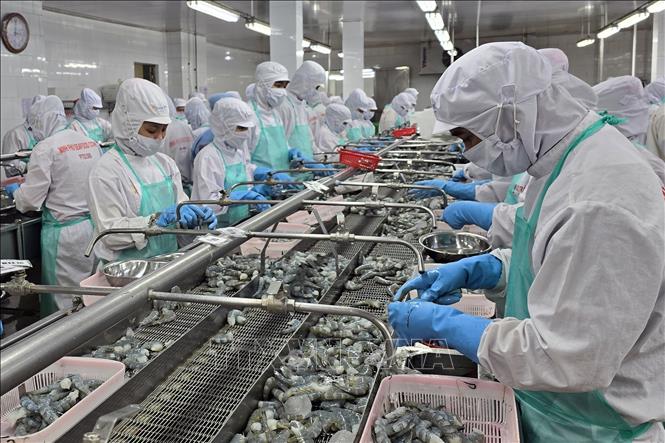With platforms to support production and processing along with continued efforts in market development, it will create momentum for seafood to continue to grow by 10-15% in 2025.

The year 2025 will continue to pose new challenges to the fisheries industry; including, resolving the IUU yellow card, adapting to climate change, environmental pollution and market barriers. But Mr. Nguyen Hoai Nam, Deputy General Secretary of the Vietnam Association of Seafood Exporters and Producers, said that the 2025 outlook for seafood exports is also very positive. Recently, the US Department of Commerce (DOC) issued the Final Conclusion in the anti-subsidy investigation on frozen warm water shrimp imported from Vietnam. Currently waiting for the United States International Trade Commission (USITC) to issue a Final Conclusion on damages. However, with the DOC’s conclusion, taxes on Vietnam are lower than competing countries such as India and Ecuador. In the context of global competition, this is the driving force for Vietnamese shrimp.
Mr. Nguyen Hoai Nam also said that from 2023 until now, banks have three credit packages for fisheries and forest products, currently implementing a VND 60,000 billion package for units in the seafood chain to borrow more preferentially than the market. market from 1-1.5%… This is a policy and opportunity for businesses to prepare production and export plans for next year. From the opportunities that the seafood industry has, next year the industry will try to maintain export growth of 10-15%.
Looking back to 2024, key seafood products will have positive growth such as: shrimp 4 billion USD, up 16.7%; tuna nearly 1 billion USD, up 17%; Pangasius 2 billion USD, up 9.6%. Vietnam’s seafood industry is proud to make an important contribution to the country’s economic development, bringing jobs to millions of farmers and fishermen, affirming its position in the world marketplace.
After 20 years of integration of the seafood industry, with the above results, the industry has had significant changes, especially related to food safety and hygiene, then environmental and social responsibility. To export seafood shipments to major markets, in addition to market regulations that require Vietnamese seafood to now have additional sustainability certifications.
Currently, Europe, America, and Japan are the markets with the top 3 sales in Vietnam’s seafood exports and these markets all have requirements on resource management, requiring aquatic certification. assets of legal exploitation origin, management and responsibility. Therefore, businesses must be aware of this problem and must change to adapt.
“Because global competition will be an opportunity for us to change and implement good regulations to export better. That is the motivation for us to change our perception and implement new regulations in markets for favorable exports,” said Mr. Nguyen Hoai Nam.
From an export market perspective, the Middle East region has emerged as a potential market for Vietnam’s seafood export industry. Among seafood products exported to the Middle East, tuna and pangasius are the two products that account for the largest proportion. In addition, frozen pangasius fillets, cuts and whole fish continue to dominate thanks to their convenience and ease of processing, meeting the needs of consumers in this area.
These countries not only have high demand for seafood consumption but also have strict standards such as requiring products to be Halal certified, which creates opportunities for Vietnamese seafood exporters. Typically, Israel is the largest seafood importer in the region, accounting for nearly 30% of Vietnam’s seafood export value to the Middle East, mainly canned tuna. The growth of this market is up to 35% in the first 11 months of 2024.
According to the Vietnam Association of Seafood Exporters and Producers, with strong economies such as Israel, Saudi Arabia, UAE and Qatar, the Middle East is a potential seafood export market, with strong growth and High demand for seafood consumption. Products such as tuna, pangasius and some other freshwater fish have great opportunities to expand market share in this area. However, exporters need to pay attention to compliance with Halal standards and carefully prepare for influencing factors such as political situations and regional conflicts.
Mr. Nguyen Hoai Nam believes that businesses will be more proactive and accompany localities and the state, will open the market, together remove barriers… bringing Vietnamese seafood to reach further and develop sustainably. firmly in the markets.
Deputy Minister of Agriculture and Rural Development Phung Duc Tien also said that, in the context of improved raw material sources and expanded export markets, Vietnamese seafood will go further to the 11 billion USD mark. In particular, improving product quality and improving the reputation of businesses will help Vietnamese seafood increase its market share, affirming the position of Vietnamese seafood in the international arena.
Bich Hong (VNA)
